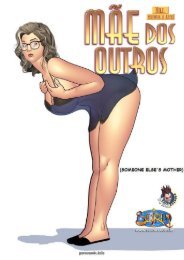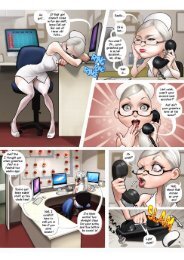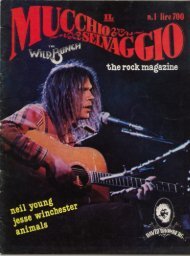AmericanCinematographer201201
Create successful ePaper yourself
Turn your PDF publications into a flip-book with our unique Google optimized e-Paper software.
◗ Cold Case
Left: A large silk and a solid hung from crane arms help the crew shape the
look of a street scene. Right: While shooting a night-exterior chase sequence,
crewmembers used rain spinners and hair dryers to keep mist from freezing
on the camera lenses.
elements, and in extreme temperatures
that can create obstacles,” says
Cronenweth. “The first assistants
ended up having to pull focus more off
of monitors, by eye. They’re phenomenal
lenses, and I would definitely use
them again; they probably held up as
well as any equipment does in that kind
of environment. But it’s something to
be aware of when you’re working in
extreme weather conditions.”
Some of the movie’s large exterior
setups posed other challenges.
Salander’s main mode of transportation
is her motorcycle, and she is not a timid
driver. Many sequences show her
zipping around dangerously icy roads,
and Cronenweth had to tackle one of
these scenes, a 5-mile run through a
forest at night, on his second day on set.
“I thought, ‘How are we gonna
do this?!’” he recalls. “We ended up
tackling it very simply, actually, and it
looks quite believable. We used an
insert car to either chase or lead the
motorcycle. When we were chasing her,
we simply increased the strength of the
headlight on her motorcycle by adding
some headlight fixtures with quartz
globes and wide-angle lenses so the
light would fan out and hit the trees in
front of her on both sides of the road.
“We set out to
embrace the Swedish
winter. It’s a strong
element in the story,
almost a character of
its own.”
“We then put a small bounce on
the front of the camera car, about 2 stops
underexposed, to get some detail on her
and the motorcycle. Lastly, we used
narrow-beam HMIs to softly project
ahead of and above her to illuminate the
forest. When we were leading her, we
used the same bounce idea on the truck
and the same narrow HMIs, and let the
motorcycle’s headlight bounce and light
her with just soft return.”
Making night exteriors like this
even tougher was the moisture from
nearby bodies of water, which created
mist that often froze to the lenses on
moving shots. The filmmakers used
standard rain spinners to keep moisture
off the lenses, but the mist would freeze
on the spinners and transform them into
rotating diffusion filters. To combat this,
the camera assistants mounted hair
dryers below the spinners and kept a
constant flow of warm air on the spinning
blades.
Driving sequences involving cars
were shot onstage in Sweden using what
Cronenweth and gaffer Harold Skinner
laughingly describe as “Rich-Man’s
Process.” Skinner explains, “It was your
typical greenscreen stage, but we built
this rig with LED media panels around
the car so that we could play
44 January 2012 American Cinematographer













